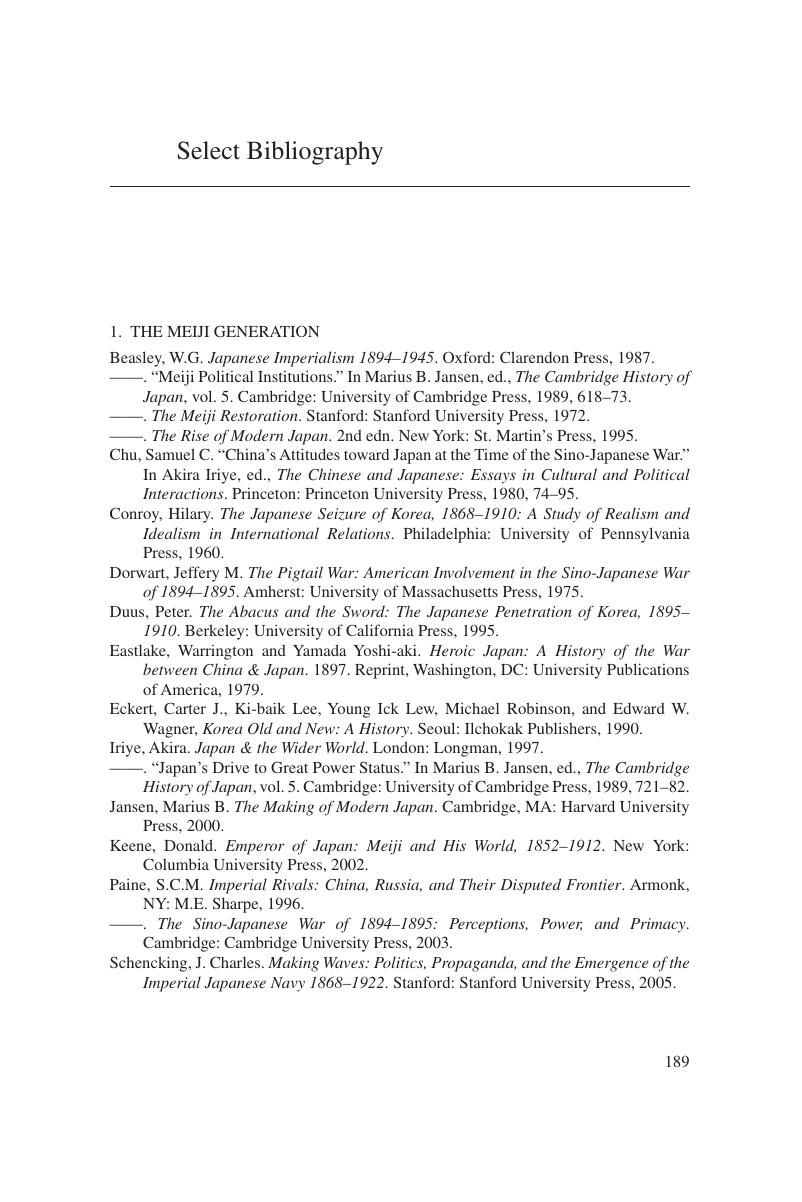Book contents
- Frontmatter
- Dedication
- Contents
- List of Maps
- Acknowledgments
- Maps
- 1 The Meiji Generation
- 2 The First Sino- Japanese War (1894– 1895)
- 3 The Russo- Japanese War (1904– 1905)
- 4 The Transition from a Maritime to a Continental Security Paradigm
- 5 The Second Sino- Japanese War (1931– 1941)
- 6 The General Asian War (1941– 1945)
- 7 Japan betwixt Maritime and Continental World Orders
- Select Bibliography
- Index
- References
Select Bibliography
Published online by Cambridge University Press: 31 March 2017
- Frontmatter
- Dedication
- Contents
- List of Maps
- Acknowledgments
- Maps
- 1 The Meiji Generation
- 2 The First Sino- Japanese War (1894– 1895)
- 3 The Russo- Japanese War (1904– 1905)
- 4 The Transition from a Maritime to a Continental Security Paradigm
- 5 The Second Sino- Japanese War (1931– 1941)
- 6 The General Asian War (1941– 1945)
- 7 Japan betwixt Maritime and Continental World Orders
- Select Bibliography
- Index
- References
Summary

- Type
- Chapter
- Information
- The Japanese EmpireGrand Strategy from the Meiji Restoration to the Pacific War, pp. 189 - 198Publisher: Cambridge University PressPrint publication year: 2017



